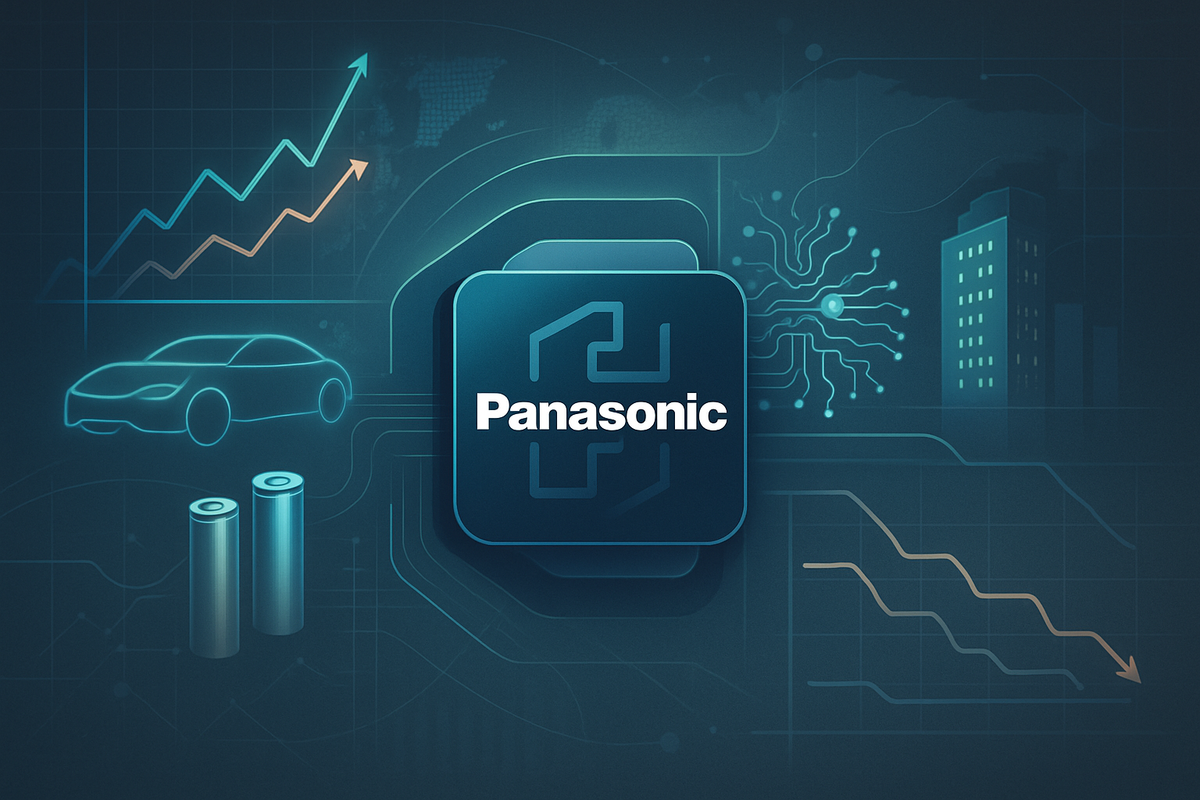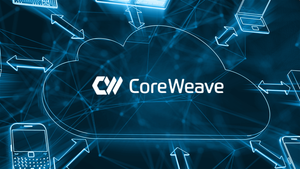
Panasonic Holdings Corporation (TSE:6752) recently reported stronger-than-expected first-quarter results for the fiscal year ending March 31, 2026. Despite surpassing analyst expectations for both earnings per share (EPS) and revenue, the market's reaction as of September 30, 2025, has been notably subdued, with the stock trading at a low Price-to-Earnings (P/E) ratio of 10.2x. This peculiar response raises questions about investor confidence and the company's future trajectory, suggesting a potential disconnect between its operational performance and market valuation.
The lukewarm reception, coupled with a recent dip in Panasonic's stock price, indicates that investors might be anticipating a slowdown in the company's otherwise strong performance. This sentiment comes despite analyst forecasts predicting an impressive 14% annual EPS growth for Panasonic over the next three years, outpacing the broader market's anticipated 9.6% expansion. The current valuation suggests either a perceived higher risk or a lack of full appreciation for the company's strategic initiatives, particularly in advanced EV battery technology and smart living solutions.
Detailed Financials and Market's Measured Response
Panasonic Holdings Corporation officially unveiled its first-quarter financial results for Fiscal Year 2026 on July 30, 2025, with a conference call led by Group Chief Financial Officer (CFO) Akira Waniko. The report, covering the period ended June 30, 2025, presented a mixed bag of financial performance that ultimately led to the market's cautious stance.
Key figures revealed a net sales (revenue) of JPY 1,896.7 billion (approximately USD 12.0 billion), marking an 11% year-over-year decrease from JPY 2,121.7 billion in Q1 FY2025. This decline was primarily attributed to the deconsolidation of the automotive business. However, when excluding the automotive segment, sales actually saw a 2% year-over-year increase, highlighting underlying strength in other areas. Operating profit reached JPY 86.9 billion, with an adjusted operating profit of JPY 91.5 billion. Net profit attributable to Panasonic Holdings Corporation (TSE:6752) stockholders rose to JPY 71.5 billion (USD 454 million), a slight increase from JPY 70.6 billion in the previous year's corresponding quarter. Basic Earnings Per Share (EPS) from continuing operations stood at JPY 30.61.
Despite the positive surprise in EPS and the increase in net profit, the market's reaction was lukewarm, primarily due to several factors. The adjusted operating profit, a crucial metric for many investors, fell short of analyst expectations. While the energy unit, particularly its battery-making segment, showed robust performance with a 47% profit jump—partially buoyed by the burgeoning AI boom—this positive was somewhat overshadowed by broader "EV headwinds" and the impact of the automotive business deconsolidation on overall sales figures.
Furthermore, a significant point of uncertainty for investors was the company's cautious stance on the potential impact of US tariffs from Q2 FY2026 onwards. Panasonic stated that these tariffs had not been factored into its full-year forecast due to the fluid geopolitical situation. This lack of clarity on a potentially material economic factor likely introduced a degree of investor hesitancy, contributing to the subdued market response even as the company maintained its full-year outlook. Key stakeholders involved in the earnings call included CFO Akira Waniko, alongside analysts and media representatives from major financial institutions such as Bloomberg, Toyo Keizai, Goldman Sachs, and Mizuho.
Market Ripples: Winners and Losers in Panasonic's Wake
Panasonic Holdings Corporation's (TSE:6752) Q1 FY2026 earnings, characterized by strategic shifts and mixed performance, are poised to send ripples across its competitive landscape and partnerships. The robust 47% surge in operating profit from its energy unit, driven by demand for energy storage systems in data centers and AI infrastructure, effectively offset a 16% decline in North American EV battery demand. This dynamic creates distinct opportunities and challenges for various players in the market.
In the EV Battery Sector: Panasonic remains a significant global player, actively developing advanced "anode-free" battery technology aiming for a 25% capacity boost by 2027. This innovation could significantly extend EV driving ranges and potentially lower costs.
- Potential Winners: Companies heavily invested in industrial-scale battery storage, such as Fluence Energy (NASDAQ: FLNC) and Tesla Energy (NASDAQ: TSLA, for its Powerwall/Megapack solutions), stand to benefit from Panasonic's increased allocation of battery plant resources towards data centers and AI infrastructure. Furthermore, suppliers of critical battery materials, particularly those involved in developing alternative anode components or more efficient cathode materials, could see new opportunities if Panasonic successfully commercializes its anode-free technology.
- Potential Losers: Direct EV battery competitors with less diversified portfolios, such as CATL, LG Energy Solution (KRX:373220), BYD (HKG:1211), Samsung SDI (KRX:006400), and SK On, could face intensified pressure. If Panasonic's anode-free technology delivers on its promises for higher energy density and cost efficiency by 2027, it could create a significant competitive disadvantage. Companies heavily reliant solely on pure EV battery sales, without a strong presence in broader energy storage, might also be more vulnerable to market slowdowns.
In Smart Living Solutions and Consumer Electronics: Panasonic's Lifestyle and Connect segments showed sales growth, with the company integrating AI into products like AI-enabled kitchen appliances.
- Potential Winners: Companies providing AI algorithms, IoT platforms, and universal connectivity protocols like Matter could benefit from Panasonic's increased integration of AI into its smart living products.
- Potential Losers: Major consumer electronics rivals like Samsung (KRX:005930), LG (KRX:003550), Sony (TYO:6758), and Philips (AMS:PHIA) will face heightened competition. If Panasonic's AI-enhanced smart living solutions gain significant market share, these competitors will need to accelerate their own smart home and AI integration to maintain their positions.
In Industrial Solutions and the AI Boom: Panasonic is strategically focusing on AI, with its Connect and Industry segments seeing increased sales in generative AI servers and energy storage.
- Potential Winners: Companies like Nvidia (NASDAQ: NVDA), AMD (NASDAQ: AMD), and Intel (NASDAQ: INTC), which supply critical hardware for AI processing and data centers, will likely see increased demand. AI software and service providers, including Anthropic due to its strategic partnership with Panasonic, will also benefit. Industrial automation and robotics companies like Siemens (ETR:SIE), Mitsubishi Electric (TYO:6503), and ABB (SIX:ABBN) could see increased demand for complementary solutions as Panasonic Connect applies AI to optimize manufacturing and logistics.
- Potential Losers: Traditional industrial solution providers slow to integrate AI into their offerings may lose market share to Panasonic Connect's AI-driven, efficiency-boosting solutions.
Impact on Partners: Tesla (NASDAQ: TSLA) remains a crucial strategic partner for Panasonic in EV battery supply. Panasonic's pursuit of an anode-free battery that could significantly boost range for vehicles like the Tesla Model Y represents a substantial potential advantage for Tesla, enhancing vehicle performance and potentially lowering costs. However, production delays due to a slowdown in Tesla sales have already impacted Panasonic's US EV battery plant expansion, highlighting a potential challenge for Tesla's future battery supply. Other partners like Blue Yonder, which Panasonic acquired, will be significant beneficiaries of Panasonic's "Panasonic Go" initiative, leveraging its AI capabilities for global expansion.
Broader Implications: Navigating Global Trends and Strategic Pivots
Panasonic Holdings Corporation's (TSE:6752) Q1 FY2026 earnings, announced on July 30, 2025, offer a window into a company actively re-shaping itself amidst a complex global landscape. The strategic pivots, particularly in EV batteries, Artificial Intelligence (AI), and smart living solutions, carry significant implications for the broader technology and manufacturing sectors, influencing competitors, partners, and regulatory environments.
Aligning with EV Battery Trends: The global EV battery market is undergoing rapid transformation, with demand projected to quadruple by 2030. Key trends include the pursuit of solid-state batteries for higher energy density and faster charging, and the growing adoption of Lithium Iron Phosphate (LFP) batteries for cost-effectiveness. Panasonic is directly addressing these trends by investing heavily in next-generation battery technology, targeting a 25% boost in EV battery capacity and aiming for 1,000Wh/L energy density via solid-state batteries by 2031. Its substantial $4 billion investment in a new EV battery plant in DeSoto, Kansas, set to begin production in 2025, is a strategic move to localize supply chains and reduce reliance on overseas suppliers, aligning with global pushes for resilient and diversified manufacturing. While North American EV battery demand for Panasonic declined in Q1 FY2026, influenced by US tariff policies and the phase-out of the IRA 30D tax credit, the company's pivot towards energy storage for AI infrastructure demonstrates strategic agility to mitigate these headwinds.
Riding the AI Wave: The AI market is characterized by pervasive integration and soaring demand for infrastructure, with AI now accounting for over 40% of global energy storage demand. Panasonic's Q1 FY2026 earnings highlight strong sales growth in its generative AI-related businesses within the industry and energy segments. The doubling of demand for energy storage solutions for data centers is a direct response to the AI boom. Furthermore, Panasonic is integrating AI-driven operational analytics into its EV battery facilities through a partnership with Palantir (NYSE: PLTR), aiming to enhance efficiency and reduce waste. This clear alignment with the burgeoning AI sector, coupled with workforce reduction in non-growth areas, underscores Panasonic's commitment to leveraging AI for future growth.
Smart Living and Sustainability: The smart home market is projected for robust growth, driven by AI integration, sustainability, and enhanced interoperability. While specific details weren't extensively covered in the Q1 report, Panasonic's broader strategic focus on AI-driven automation and energy storage for homes suggests an alignment with these trends. The company's commitment to sustainability, including goals to reduce CO2 emissions and achieve net-zero emissions in factories by 2030, directly addresses the growing consumer demand for eco-friendly smart home solutions.
Regulatory and Policy Implications: The US trade environment, particularly tariffs, significantly impacted Panasonic's Q1 FY2026 profits. The imposition of widespread tariffs by the US administration directly increases costs for manufacturers. Panasonic's proactive approach to mitigating these costs through price revisions is a direct response to this policy landscape. Conversely, the US Inflation Reduction Act (IRA) acts as a powerful incentive for domestic manufacturing, offering significant tax credits for EVs that meet specific requirements for critical mineral and battery component sourcing and assembly in North America. Panasonic's multi-billion dollar investment in its Kansas battery plant and its focus on localizing supply chains are clear strategic moves to capitalize on IRA incentives and mitigate geopolitical risks, also contributing to job creation in the US EV industry.
Historical Precedents and Strategic Alignment: Panasonic's current strategic adjustments echo historical precedents of successful corporate pivots in the technology and manufacturing sectors, similar to Netflix (NASDAQ: NFLX) transitioning from DVD rentals to streaming or IBM (NYSE: IBM) from hardware to cloud/AI services. These transformations involved re-evaluating core assumptions and reallocating resources to align with emerging trends. Panasonic's robust growth in AI-related businesses and energy storage for data centers signifies a strong alignment with accelerating demand for AI infrastructure. Its substantial investments in US battery production are directly in line with global geopolitical shifts and protectionist policies. While North American EV battery demand for Panasonic declined, this divergence is being actively mitigated by its strategic pivot into other high-growth areas, demonstrating a calculated risk management approach.
The Road Ahead: Navigating Growth and Investor Confidence
Panasonic Holdings Corporation (TSE:6752) stands at a pivotal juncture, with its Q1 FY2026 earnings report outlining a nuanced picture of resilience amidst a challenging market, particularly in the electric vehicle (EV) battery sector. The market's lukewarm reaction and a P/E ratio hovering between 8.0x and 10.6x suggest that investors are keenly watching how Panasonic will capitalize on its strategic investments in EV batteries and AI, and whether its aggressive restructuring will translate into sustained profitability.
Short-Term and Long-Term Trajectories: In the short term, Panasonic faces the immediate challenge of navigating EV market headwinds, particularly the slowdown in Tesla's (NASDAQ: TSLA) sales, which has led to delays in fully ramping up production at its Kansas battery plant. The company is actively focusing on cost reduction and efficiency through a major restructuring plan, including a global workforce reduction of 10,000 employees in 2025, aiming to improve profitability by at least ¥150 billion ($1 billion) by FY2027. Managing the impact of US tariffs, which reduced Q1 profits by ¥5.8 billion, will also be critical, with Panasonic employing pricing adjustments and diversified supply chains.
Long-term, Panasonic aims to quadruple its EV battery production capacity to 200 GWh per year by 2030, though this timeline may adjust with market conditions. A key strategic pivot is the "Panasonic Go" initiative, a significant shift towards AI integration, with a goal for AI-driven sectors to account for nearly 30% of its sales by 2035. The booming demand for energy storage systems in data centers, a sector projected to grow at a 35% compound annual rate through 2030, presents a strong long-term growth opportunity, leveraging Panasonic's core battery technology. Furthermore, the "Panasonic GREEN IMPACT" initiative, targeting net-zero CO2 emissions in all factories by 2030, positions the company to attract ESG-conscious investors.
Strategic Pivots and Adaptations: Panasonic's future hinges on several key strategic pivots. Diversifying its EV battery clientele beyond its heavy reliance on Tesla (NASDAQ: TSLA) is crucial for stability. Aggressive portfolio optimization, including job cuts and potential divestiture of underperforming divisions, is vital to streamline operations and enhance profitability. The "Panasonic Go" initiative demands that AI investments translate into tangible revenue streams and improved operational efficiencies. Flexible production planning for EV batteries, adapting to real-time market demand, will be essential in a volatile EV market, and continuing to expand into energy storage systems for data centers and industrial AI servers demonstrates the value of applying core technologies to new, high-demand areas.
Market Opportunities and Challenges: Opportunities abound in the booming AI infrastructure demand, boosting sales of Panasonic's related electronic materials and components. The global energy transition further positions Panasonic for growth in decarbonization and sustainable energy solutions. However, challenges include persistent EV market volatility, ongoing trade tensions and tariffs, intense competition across its diverse segments, and managing cash flow, which saw a decrease in Q1 FY2026 due to the automotive deconsolidation.
Potential Scenarios:
- Successful Transformation: Panasonic effectively diversifies its EV battery customers, scales its AI and energy storage businesses, and realizes significant profit improvements from restructuring. This would lead to a substantial increase in its P/E ratio and robust long-term growth.
- Mixed Progress: AI and energy storage show promise, but persistent EV market challenges and slower-than-anticipated benefits from restructuring temper overall growth. Investor sentiment remains cautious, and the P/E ratio stays moderate.
- Stagnation: Panasonic struggles to adapt to market shifts, AI initiatives fail to gain traction, and restructuring efforts are insufficient to overcome structural inefficiencies, leading to continued low profitability and declining investor confidence.
To address its low P/E ratio and improve investor sentiment, Panasonic must demonstrate consistent profitability, effectively communicate the high-growth potential of its energy storage and AI businesses, and show tangible results from restructuring. Expanding its EV battery customer base and emphasizing its ESG value will also be crucial. Capitalizing on its EV battery investments means continuous innovation, market diversification beyond EVs to energy storage systems, and a commitment to sustainability and recycling. For AI, the full execution of "Panasonic Go" to integrate AI across all operations, strategic partnerships, internal AI adoption, and product innovation will be key to unlocking new revenue streams.
Conclusion: A Company in Transition, A Market Awaiting Proof
Panasonic Holdings Corporation's (TSE:6752) Q1 FY2026 earnings report paints a complex picture of a company in a critical transitional phase. While operational performance in strategic growth areas like AI and energy storage demonstrated robust strength, the market's overall reaction has been notably lukewarm. This disconnect underscores the paramount importance of strategic execution and clear communication in the months ahead.
Key Takeaways from Q1 FY2026: Panasonic reported an 11% year-over-year consolidated sales decrease, primarily due to the deconsolidation of its automotive business. However, excluding this impact, sales saw a 2% year-over-year increase. Adjusted operating profit rose to JPY 91.5 billion, with all segments contributing, though it slightly missed the JPY 100.0 billion forecast. Net profit increased to JPY 71.5 billion, partly due to improved income taxes. Crucially, the energy unit saw a 47% surge in operating profit, driven by a doubling of demand for data center battery backup units, effectively offsetting a 16% decline in North American EV battery demand. Generative AI-related businesses also showed significant growth. Despite these operational successes, US tariffs reduced profits by JPY 5.8 billion, and operating cash flow decreased due to the automotive deconsolidation.
Assessing the Market Moving Forward: The market's cautious stance stems from several factors. The ongoing strategic reorganization, while beneficial long-term, creates short-term noise in headline figures. External uncertainties, particularly the slowdown in EV demand and the fluid impact of US tariffs (which are not fully factored into Panasonic's full-year forecast), cast a shadow. Analysts, while acknowledging the potential in data center battery backup units, remain concerned about the automotive battery business. This suggests that even strong performance in individual segments can be overshadowed by risks in other crucial areas and external policy changes.
Final Thoughts on Significance and Lasting Impact: Panasonic's Q1 FY2026 results are significant as they highlight a company actively validating its strategic pivot towards high-growth sectors. The disconnect between operational strengths and market reaction indicates that while the strategy is sound, its execution and the communication of its long-term benefits are paramount. The lasting impact will depend heavily on Panasonic's ability to consistently translate its strategic vision into financial performance, particularly by achieving its medium- to long-term targets such as double-digit profit margins by 2030 and securing top market positions. Successful streamlining of its business portfolio, optimized capital allocation, and transparent risk management will determine whether Panasonic emerges as a more focused and profitable entity.
What Investors Should Watch For in Coming Months: Investors should closely monitor:
- Revisions to EV Battery Forecasts: Any official adjustments to FY2026 sales volume forecasts for EV batteries will be critical indicators of market shifts.
- Impact of US Tariffs: Watch for quantifiable impacts of US tariffs in future earnings reports, especially since they are not fully included in current forecasts.
- Growth in AI-Related Businesses: Continued strong performance and expansion in generative AI-related businesses will be key growth drivers.
- Progress of Structural Reforms: Monitor the financial outcomes of ongoing business reforms, including the workforce reduction and other restructuring efforts.
- Dividend Sustainability and Cash Flow: While the increased dividend is attractive, assess its sustainability against the company's ability to generate strong operating cash flows.
- Strategic Capital Allocation: Observe how Panasonic allocates capital across its prioritized businesses and continues strategic investments in R&D and high-margin areas.
- Guidance for Q2 and Beyond: Any adjustments to full-year guidance in future quarters will be crucial indicators of management's confidence and ability to navigate challenges.
Panasonic is in a critical period of transformation. While Q1 FY2026 showed promising operational strength in strategic areas, overcoming external headwinds and demonstrating consistent, robust execution will be key to unlocking long-term shareholder value and fully addressing the current market disconnect.
This content is intended for informational purposes only and is not financial advice





